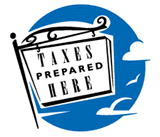 Picking
a Tax Professional
Picking
a Tax Professional
Many people admit that taxes are just too much to deal with. So they
decide to hire a professional who is familiar with the ins and outs of
tax laws.
Enrolled agents, attorneys and certified public accountants are all
professionals with varying degrees of specialized expertise in finances
and federal taxes. To help make the best choice, people should ask themselves
these questions before picking a person or firm to handle their taxes:
How complicated is my tax situation? Do I know others who have used the
preparer? Does the preparer offer the electronic filing and payment options
I want? Will the preparer be there later in the year, or in a year or two,
to answer questions on my return? What does the preparer offer for the
fee being quoted?
The answers will make the search for a tax professional easier.
 Tax
Changes for 1998 Can Benefit Taxpayers
Tax
Changes for 1998 Can Benefit Taxpayers
When filling out tax forms this year, take note of some of the changes
that could make the difference between getting a refund and paying more
taxes.
Depending on their income, people may be able to claim up to a $400
credit for each qualifying child under age 17. New this year, the child
tax credit could reduce the tax to zero, or even become a refundable credit
for taxpayers with three or more qualifying children.
People can benefit from a number of educational incentives. The Hope
credit lets people below certain income levels claim a credit for the first
two years of post-secondary education. It's limited to $1,500 per year
for qualified tuition and expenses. The lifetime learning credit applies
to qualified tuition and expenses for undergraduate, graduate and professional
degree courses paid after June 30, 1998, for courses starting after that
date. The credit is 20 percent of expenses, up to $1,000 per return. Certain
limits apply to both credits.
In addition to these credits, people can set up Education IRAs featuring
nondeductible contributions of up to $500 a year for a named beneficiary
under age 18. And people can tap into their other IRAs to pay for qualified
higher education expenses. Also, a limited amount of interest paid on higher
education loans is deductible. Some restrictions apply to each benefit.
Another new IRA is the Roth IRA. It features nondeductible contributions,
with tax-free distributions if they begin after the fifth year the taxpayer
has a Roth IRA, the taxpayer is at least age 59 1/2 or disabled, or the
distribution is a qualified first-time home buyer distribution.
New capital gains tax rules may reduce the tax owed on investments.
The benefits of lower rates now apply to sales of property held more than
one year instead of 18 months. Schedule D will take taxpayers step by step
through the rates and rules.
The earned income tax credit (EITC) could be worth a few dol-lars,
or up to $3,756 for people with more than one qualifying child, up to $2,271
for one qualifying child. For those with no children, the EITC could be
worth up to $341. The amount people can earn and still be eligible for
the credit in 1998 is $30,095 for those with more than one child, $26,473
with one qualifying child, and $10,030 with no children. People who aren't
eligible for the EITC, but who claim it anyway, could be prohibited from
taking it for up to 10 years.
Rules for getting installment agreements, offers in compromise and
innocent spouse relief are now less stringent. And people who haven't been
able to resolve their problems through normal IRS channels have a new toll-free
line to a taxpayer advocate: 1-877-777-4778. Social Security numbers will
not be printed anywhere on the tax instruction booklets or labels, so people
need to make sure they put their correct SSNs on their tax returns and
other forms. And those who owe taxes can write their checks to the United
States Treasury, but don't staple the check to the return.
Get details on these topics and more in the tax instruction booklets
or in free IRS Publication 553,
Highlights of 1998 Tax Changes. Call 1-800-829-3676 to order,
or download here.
 Capital
Gains Tax Expanded
Capital
Gains Tax Expanded
For people who owned stocks, mutual funds or other investments last
year, chances are the new capital gains tax rules will affect how they
file their tax returns and how much tax they�ll owe from those investments.
Last year, the Taxpayer Relief Act of 1997 went into law, affecting
millions of taxpayers on their 1997 tax returns. Many were able to take
advantage of lower capital gains rates. This year, the benefits of the
Act have been expanded and now apply to sales of property held more than
one year, instead of 18 months.
If the net capital gain is from collectibles or Section 1202 gain
(from qualified small business stock), then the maximum capital gains rate
is 28 percent. If the net capital gain is from unrecaptured Section 1250
gain (from depreciable real property), then the maximum capital gains rate
is 25 percent. If the net capital gain is from other gain, then the maximum
rate is 20 percent, but only 10 percent for gains that would otherwise
be in the 15 percent tax bracket.
Taxpayers who have capital gains distributions from mutual funds
must use Schedule D to report them, rather than Schedule B. Those who have
ordinary dividends of more than $400 must file Schedule B.
For more information about the capital gains tax changes, see a financial
advisor or get free IRS Publication
550, Investment Income and Expenses, Publication
564, Mutual Fund Distributions, and Schedule
D and its instructions. Call 1-800-829-3676 to order, or download here.
General Information | 1998 Tax Year Archives | Tax Help Archives | Home
